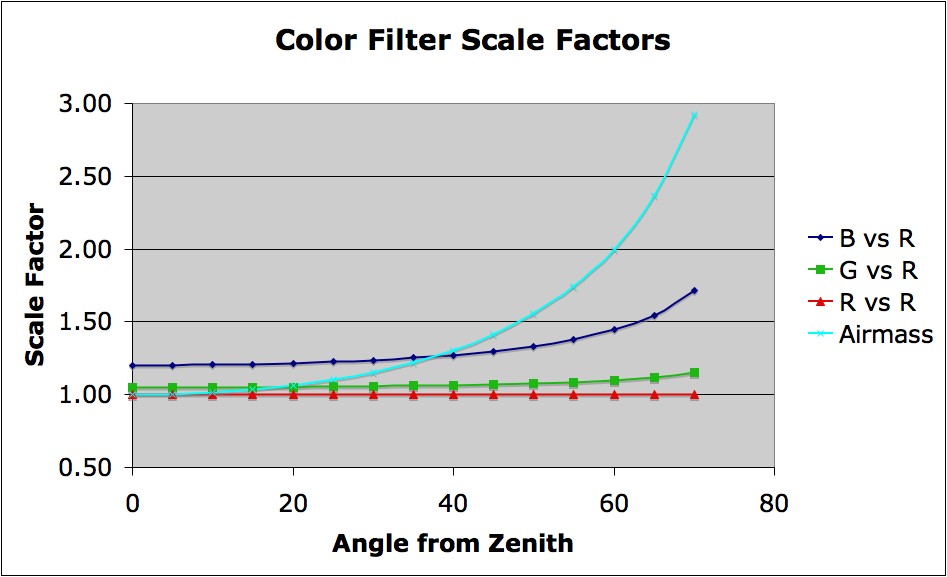Atmospheric Extinction

Atmospheric Extinction:
There are a variety of mechanisms by which the light going through the atmosphere can be scattered or otherwise "lost" before it reaches your ground-based telescope. Generally, all the different mechanisms are lumped together into what is called atmospheric "extinction". (This doesn't mean that the atmosphere is becoming extinct, but that the light going through it may be getting that way.) One of the primary types of extinction is Rayleigh Scattering of light by the actual atoms in the atmosphere. The atoms are of a size that they scatter blue light much more efficiently. This is why the sky is blue! The atmosphere has the same effect on starlight attempting to pass through the atmosphere - more blue light is scattered. When you are looking through more and more atmosphere, i.e. more towards the horizon, then even more blue light will be scattered, and the object will look redder than it did at the zenith. http://en.wikipedia.org/wiki/Rayleigh_scattering
The table below was created to help figure out what relative scale factors should be used when combining different color channels to create an image. The airmass in this case is calculated using a flat Earth model, which works surprisingly well until you get close to the horizon (or the rows near the bottom of this table). The scale factors for B and G are compared to red, so red can be defined as 1.0 at all angles. The coefficients for the extinction factors in this table were calculated using BVR (photometric) filters, and not "imaging" filters, but the scale factors should be close. The main difference between the sets are the much greater wavelength overlap in the BVR set, and the "wider" green filter (V=visible) that overlaps the cyan oxygen [OIII] line. Observing at altitudes significantly above sea level will reduce the effects shown.
Angle B vs R G vs R R vs R Airmass 0 1.20 1.05 1.00 1.00 5 1.20 1.05 1.00 1.00 10 1.21 1.05 1.00 1.02 15 1.21 1.05 1.00 1.04 20 1.22 1.05 1.00 1.06 25 1.23 1.05 1.00 1.10 30 1.24 1.06 1.00 1.15 35 1.25 1.06 1.00 1.22 40 1.27 1.06 1.00 1.31 45 1.30 1.07 1.00 1.41 50 1.33 1.08 1.00 1.56 55 1.38 1.09 1.00 1.74 60 1.45 1.10 1.00 2.00 65 1.55 1.12 1.00 2.37 70 1.71 1.15 1.00 2.92 75 2.04 1.20 1.00 3.86 80 2.89 1.32 1.00 5.76
In addition to these scale factors, CCDs will usually have different efficiencies at different wavelength, and those effects are often much more significant than these atmospheric factors. When combining R:G:B from the ST-10XE, a ratio of 1:1:1.5 works if CCD efficiency and filter transmission are the only effects.
The values in the table above were generated in Excel. The Excel worksheet can modify zenith airmass, different extinction coefficients, and camera efficiencies. The next goal is to create a Java applet that does this.
Date: June 2010
Views: 7945
 This work is licensed under a Creative Commons Attribution-NonCommercial-ShareAlike 4.0 International License.
This work is licensed under a Creative Commons Attribution-NonCommercial-ShareAlike 4.0 International License.

